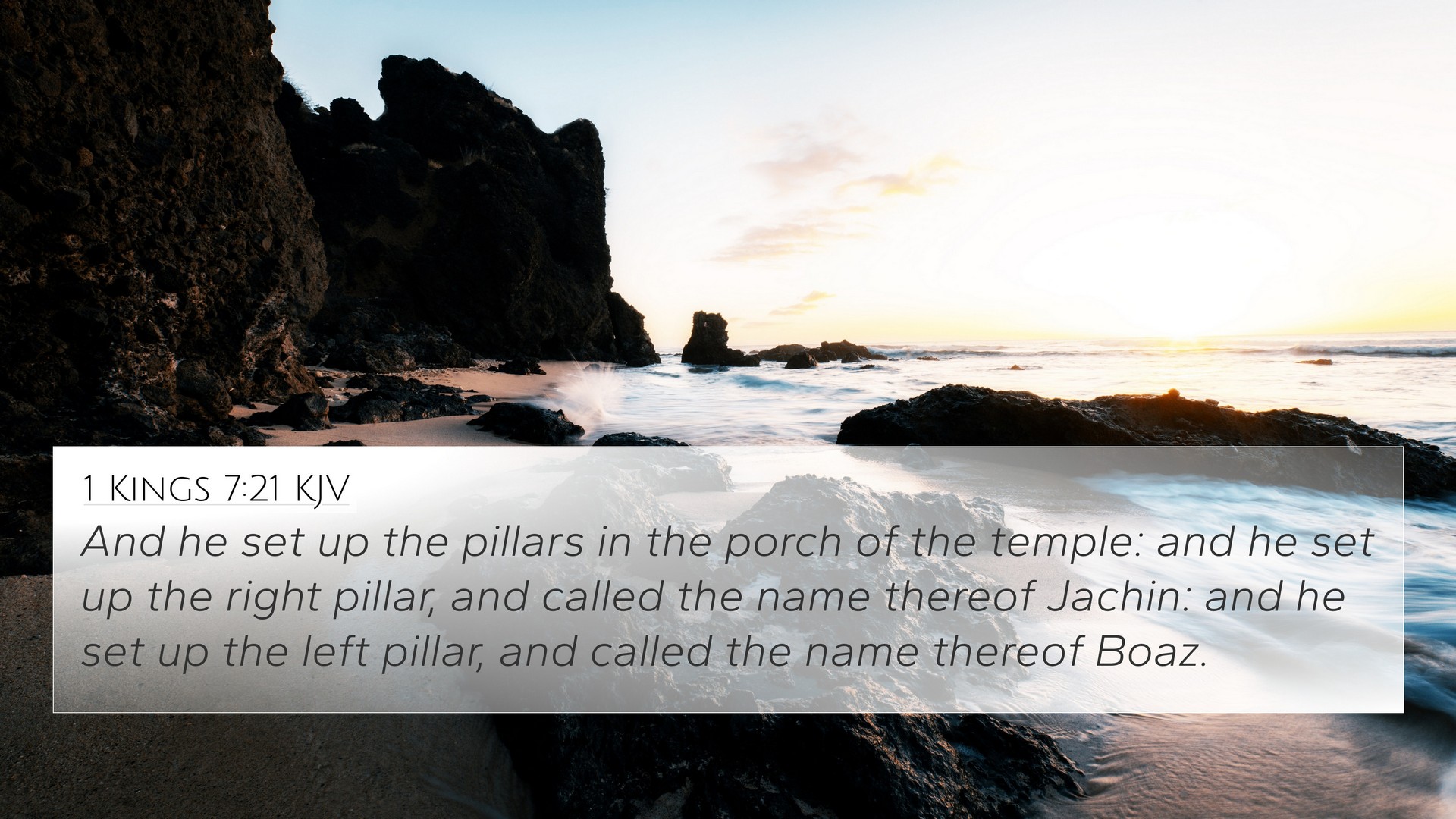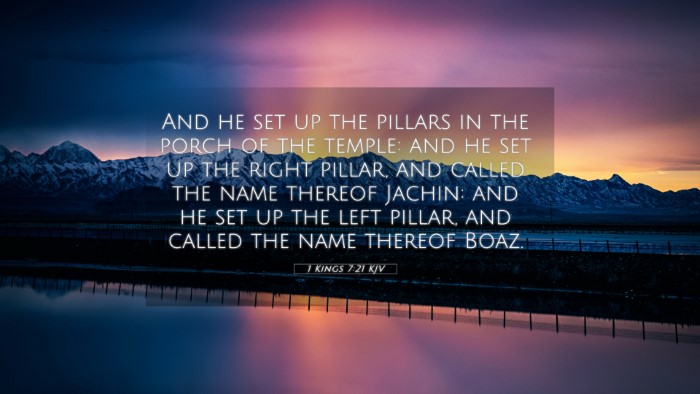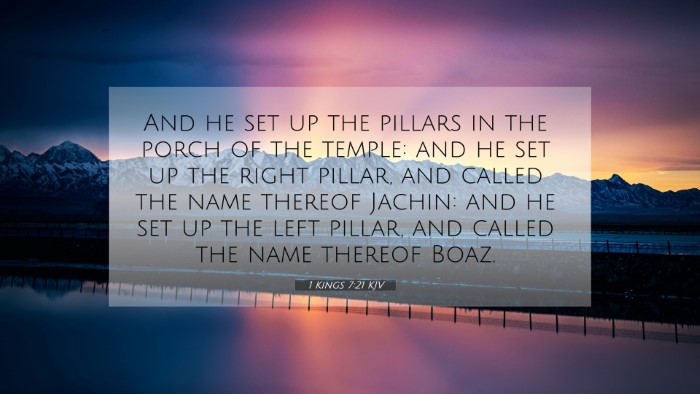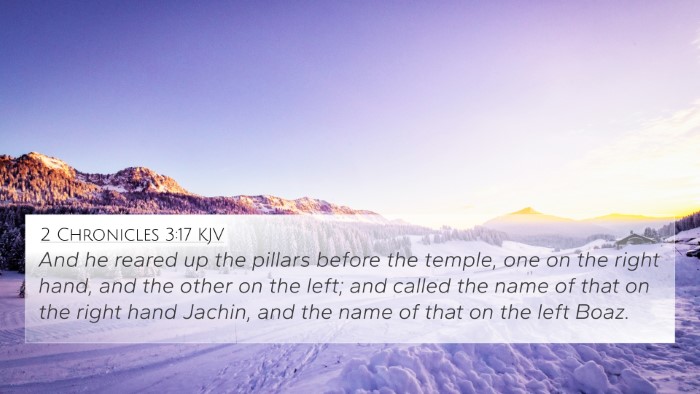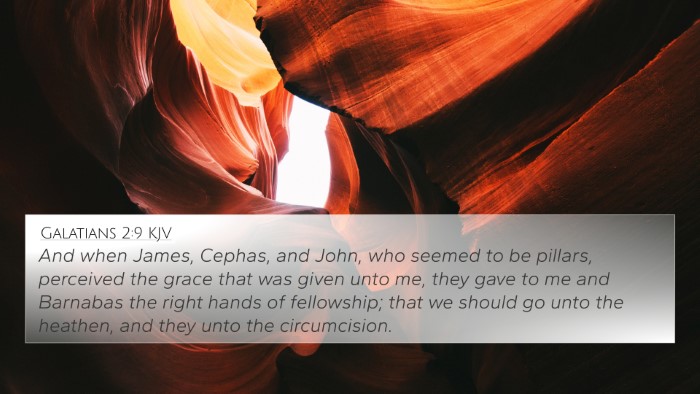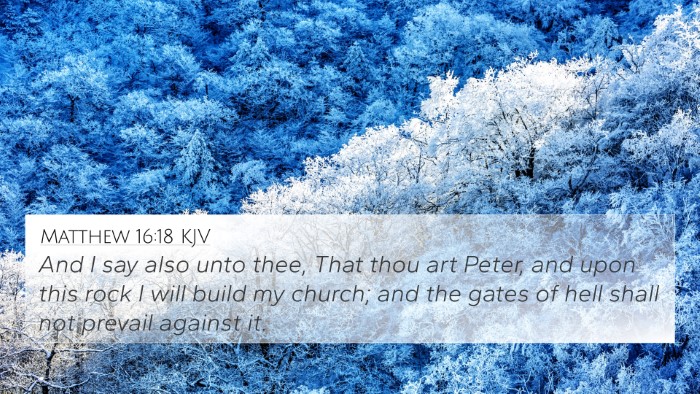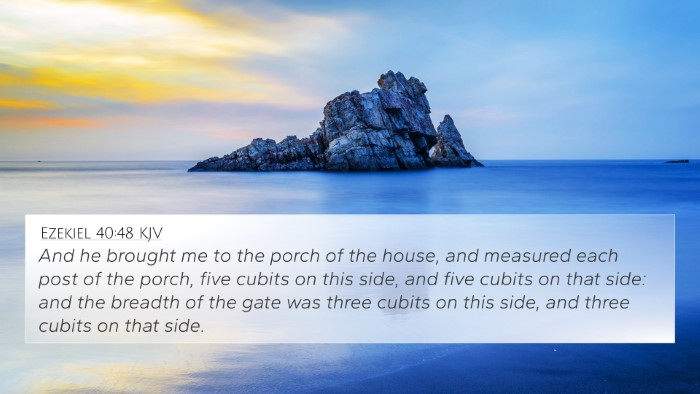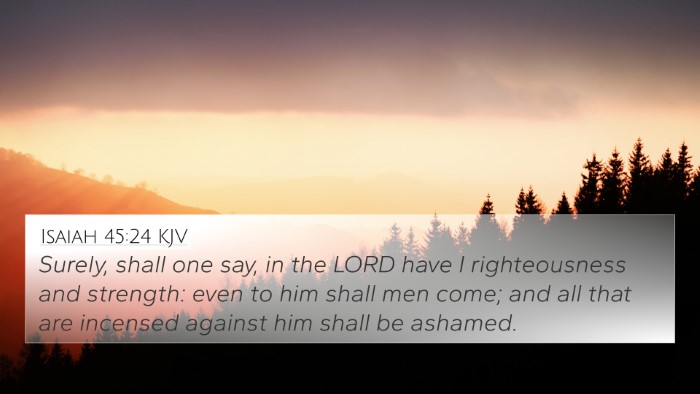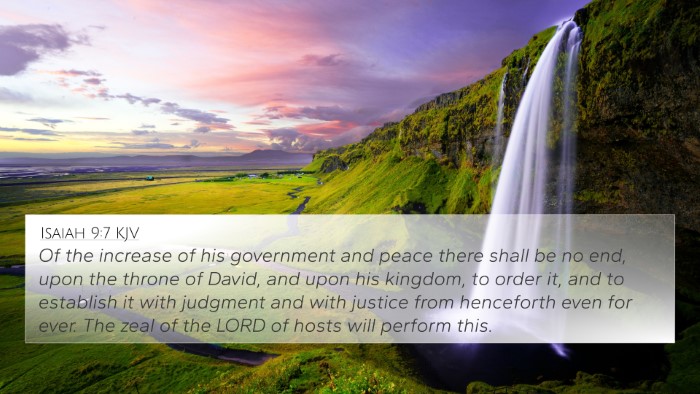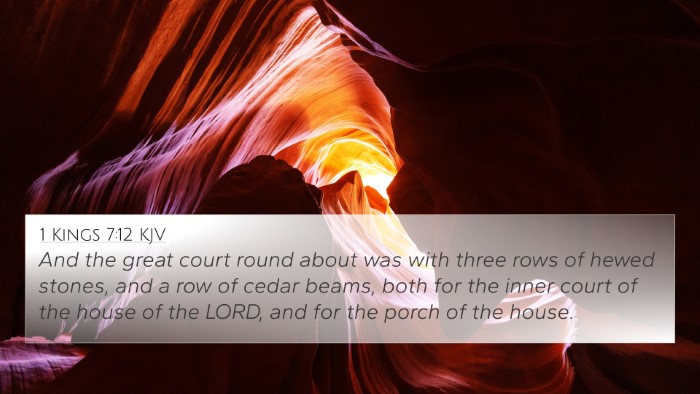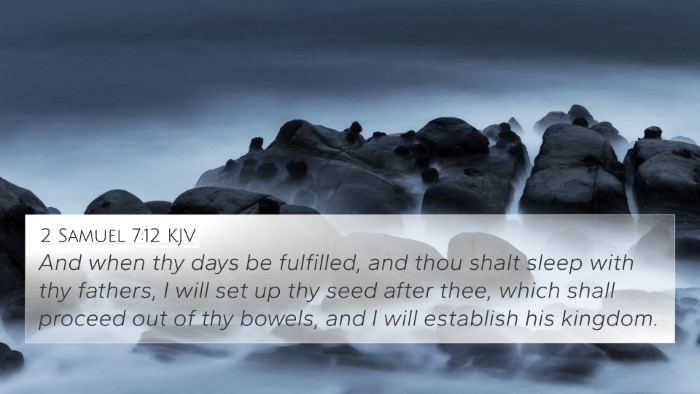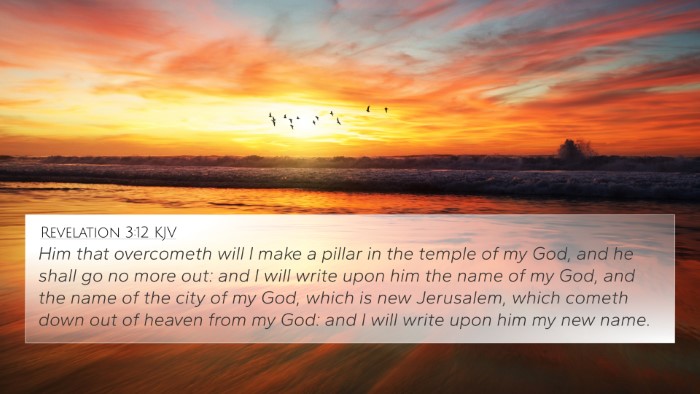Understanding 1 Kings 7:21
1 Kings 7:21 states: "And he set up the pillars in the porch of the temple: and he set up the right pillar, and called the name thereof Jachin: and he set up the left pillar, and called the name thereof Boaz."
This verse describes the construction of the temple built by Solomon, specifically focusing on the establishment of two significant pillars at the entrance.
Summary of Insights
Commentaries provide valuable insights into the symbolism and significance of these pillars. Below, we explore the interpretations from several respected public domain commentaries.
Symbolism of Jachin and Boaz
- Matthew Henry: Jachin means "He shall establish," and Boaz means "In Him is strength." The two pillars symbolize God's strength and enduring support for His temple and His people.
- Albert Barnes: The placement of these pillars at the entrance of Solomon's temple indicates the importance of divine establishment and strength, foundational themes in Hebrew spirituality.
- Adam Clarke: These pillars are significant not only architecturally but also spiritually, representing a divine invitation to come and witness God's power and authority.
Architectural Significance
- Matthew Henry: The grandeur of these pillars sets the tone for worship, showcasing the magnificence of the temple dedicated to God.
- Albert Barnes: The design reflects a blend of cultural influences, suggesting the importance of integrating local elements into worship and architecture.
- Adam Clarke: The height and materials used for these pillars emphasize the grandeur of God's presence, highlighting the importance of artistry in religious structures.
Theological Implications
- Matthew Henry: The existence of these pillars serves as a reminder to the Israelites of God's eternal nature and His covenant promises.
- Albert Barnes: These names and their meanings create a narrative that links the physical construction of the temple to the spiritual foundation of faith.
- Adam Clarke: The duality of the pillars suggests a balance between God's justice and mercy, which is a recurring theme throughout the Scriptures.
Connections with Other Bible Verses
The imagery of Jachin and Boaz can be linked to several other scripture passages to enhance understanding through cross-referencing:
- Exodus 26:32-33: The design of the temple curtain reflects the holiness of the presence of God, similar to the role of the pillars.
- Psalms 127:1: "Except the Lord build the house, they labor in vain that build it," echoing the themes of divine establishment.
- Isaiah 28:16: "Therefore thus saith the Lord God, Behold, I lay in Zion for a foundation a stone," relating to the foundation of strength in God.
- Jeremiah 17:7: "Blessed is the man that trusteth in the Lord, and whose hope the Lord is," parallels the strength found in God's foundation.
- Hebrews 3:4: "For every house is builded by some man; but he that built all things is God," directly connecting the concept of God as the master builder.
- 1 Corinthians 3:11: "For other foundation can no man lay than that is laid, which is Jesus Christ," emphasizing the ultimate foundation in Christ.
- Revelation 21:14: The foundations of the New Jerusalem echo God's divine establishment throughout scripture.
Lessons and Applications
Understanding 1 Kings 7:21 provides valuable lessons for believers:
- The importance of a strong foundation in faith is essential for spiritual growth.
- Recognizing God's hand in both the creation of the physical and spiritual realms can enhance worship experiences.
- Emphasizing the strength and establishment of God in times of uncertainty offers reassurance to believers.
Using Cross-References for Deeper Understanding
Engaging with cross-referencing tools can greatly enhance one's understanding of scripture. Here are some suggested approaches:
- Bible concordance: Utilize resources to find key terms related to Jachin and Boaz to uncover further connections.
- Bible reference resources: Leverage study guides that focus on architectural symbolism within the Bible.
- Cross-reference Bible study: Formulate a study plan that incorporates these related verses for a thematic approach.
- Tools for Bible cross-referencing: Make use of online tools or print materials to identify biblical parallels and deepen insight.
- Inter-Biblical dialogue: Explore how themes in this verse resonate with both the Old and New Testaments for a comprehensive view.
Conclusion
1 Kings 7:21 serves as a vital verse illustrating the significance of God's establishment and strength in both physical and spiritual contexts. By utilizing scripture cross-references, engaging deeply with commentaries, and applying lessons from this passage, believers can enhance their understanding of God's word.
